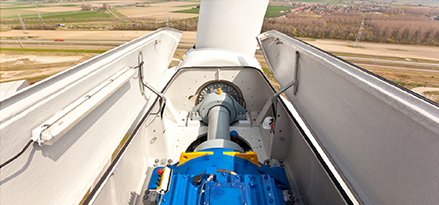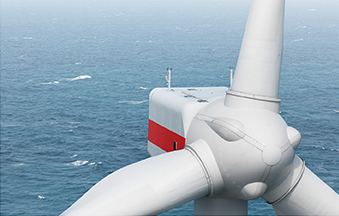
How to improve safety in wind turbine maintenance
Tom Schiff, Global Field Engineering Support Manager, ExxonMobil Fuels & Lubricants
The U.S. Bureau of Labor Statistics (BLS), a sub-section of the U.S. Department of Labor, recently announced that private industry employers reported more than 3 million workplace injuries and illnesses in 2014, with human-machine interactions (HMI) among the leading causes of injury. And, in the BLS’ 2013 Census of Occupational Injuries, approximately one-third of fatal workplace accidents reported resulted from incidents involving falls, slips, trips and contact with objects and equipment.
You might be thinking that such risks are inherent in mechanical maintenance, but these risks can be even greater in applications that, by nature, operate in extreme conditions, such as wind turbines.
Wind turbines are particularly challenging to maintain, given the tight quarters and great heights of the gearboxes. So, what can operators do to reduce the safety risks associated with wind turbine maintenance?
There are two major changes that operators can implement to reduce instances of HMI in wind turbine maintenance:
- Convert operations to a high-performance synthetic turbine gearbox lubricant
- Implement a routine gearbox oil analysis program
Choosing the right oil
A high-performance synthetic gearbox oil can go a long way toward protecting gearbox components from wear, thus reducing the need for HMI. It wasn’t very long ago that wind turbine gearbox oil had an expected service life of only 18 months. But today, advanced gearbox oils have been shown to last from five to seven years in continuous service, and performance continues to improve.
Recently, Imperial introduced its latest solution for the wind industry,
Mobil SHC™ Gear 320 WT wind turbine gear lubricant.* This new gearbox oil has been shown to provide exceptional protection against conventional wear modes such as scuffing, as well as a high level of resistance against micropitting fatigue, even under extreme temperatures and harsh operating conditions where corrosion may be severe. These benefits not only help enhance gear life and extend oil drain intervals, but they can also help reduce unplanned maintenance downtime, minimizing the safety risks associated with employee-equipment interaction.
Monitoring oil condition
In addition to selecting the right oil, implementing a routine oil analysis program is crucial to ensuring successful operations over the long haul and reducing the occurrence of maintenance procedures. By taking a proactive approach to maintenance and regularly sampling gearbox oil, operators can identify turbine reliability issues and lubricant degradation before they cause critical equipment failure, helping enhance safety by reducing the need for maintenance personnel to interact with equipment.
Additionally, utilizing services that take a forensic approach to maintenance can help extend component life within the turbine. For example, an operator experiencing shorter-than-expected bearing life in turbine operations can partner with experts to plan and implement a maintenance program to address his or her specific needs and reliability challenges.
How can this help improve safety? Well, maximizing productivity and improving safety go hand-in-hand. By enhancing equipment reliability and extending component life, wind turbine operators can reduce the need for maintenance that poses the greatest safety risks to personnel.

